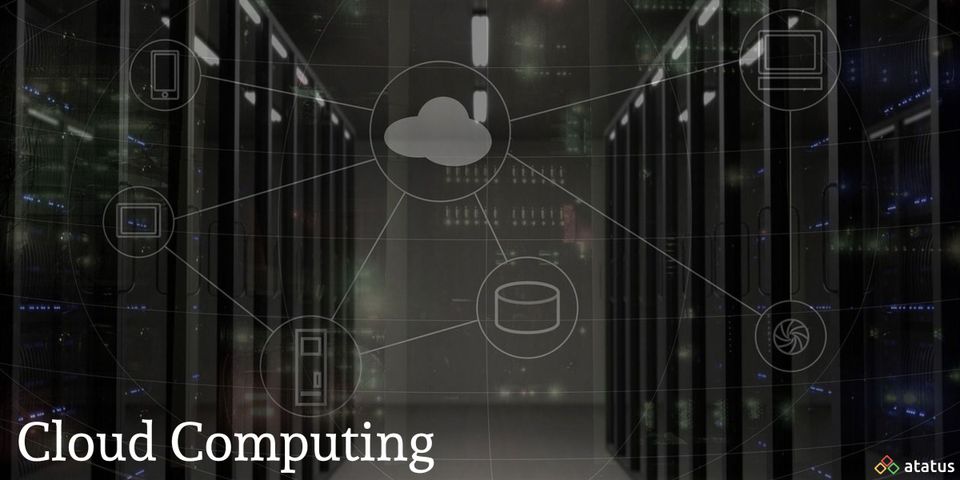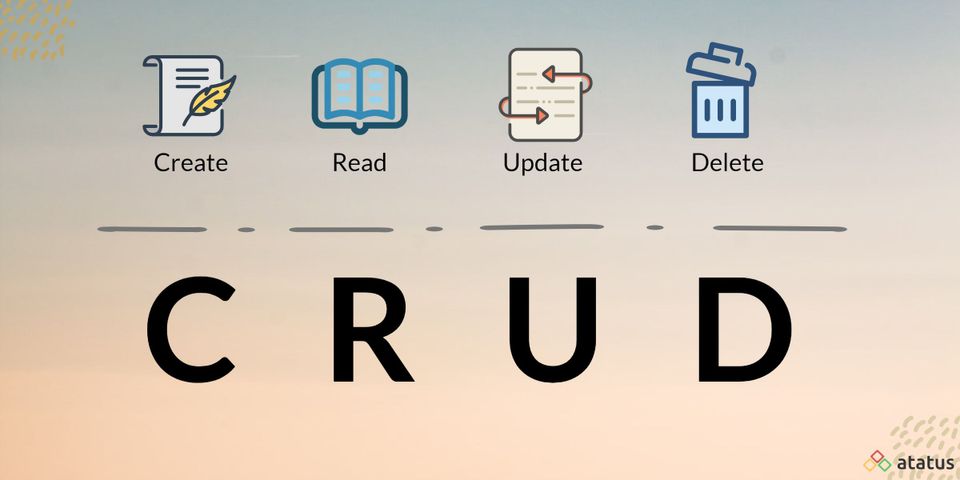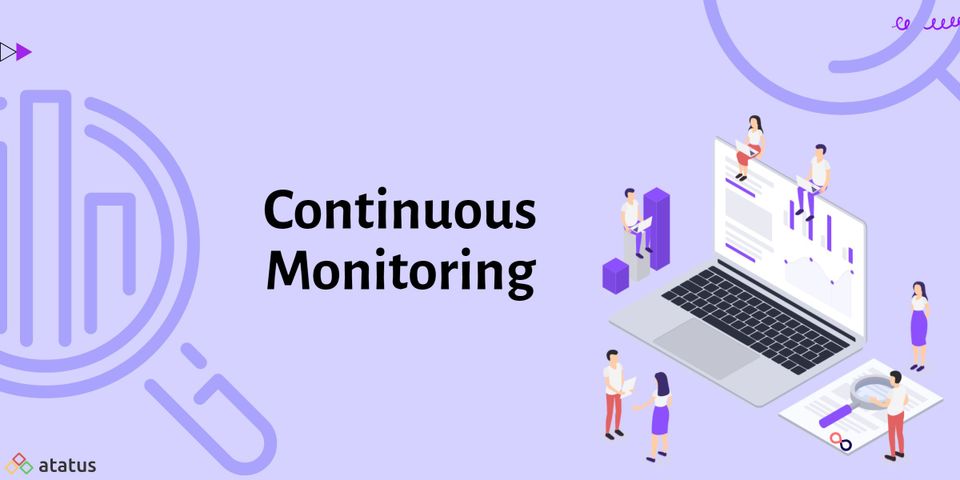Cloud computing services include everything from basic storage, networking, and processing power to natural language processing and artificial intelligence, as well as common office applications. Almost any service that doesn't require you to be physically near the computer hardware you're using can now be supplied through the cloud.
We will go over the following:
- What is Cloud Computing?
- Types of Cloud Services
- Types of Cloud Computing
- How does Cloud Computing Work?
- Benefits of Cloud Computing
What is Cloud Computing?
Cloud computing refers to the on-demand availability of computer system resources, particularly data storage and computational power, without the requirement for active management by the user. The term refers to data centres that are accessible to a huge number of people over the Internet. In today's big clouds, functions from central servers are frequently spread over multiple locations. If the connection to the user is relatively close, it can be classified as an edge server.
Clouds can be restricted to a single company (enterprise clouds) or made open to several companies (public clouds). To achieve coherence and economies of scale, cloud computing relies on resource sharing. According to advocates of public and hybrid clouds, cloud computing helps businesses to avoid or reduce upfront IT infrastructure expenses.
Supporters of cloud computing also claim that it enables businesses to get their applications up and running faster, with better manageability and less maintenance, and that it enables IT teams to more quickly adjust resources to meet fluctuating and unpredictable demand, allowing for burst computing capability such as high computing power during peak demand periods.
Types of Cloud Services
Infrastructure as a service (IaaS), platform as a service (PaaS), serverless computing, and software as a service (SaaS) are the four main types of cloud computing services. Because they are built on top of one another, they are frequently referred to as the cloud computing stack. Understanding what they are and how they differ makes it easier to achieve your company objectives.
#1 Infrastructure as a Service (IaaS)
Infrastructure-as-a-Service (IaaS) refers to the basic computing components that can be hired, such as physical or virtual servers, storage, and networking. Companies who want to create applications from the bottom up and control nearly all of the aspects will find this appealing, but it does necessitate having the technical abilities to coordinate services at that level.
#2 Platform as a Service (PaaS)
Platform-as-a-Service (PaaS), which includes the underlying storage, networking, and virtual servers, is the next layer up. PaaS enables users to build, test, deploy, manage, and update applications over their entire lifecycle. This will also contain the tools and software that developers will need to construct applications on top of middleware, database management, operating systems, and development tools are just a few examples.
#3 Serverless Computing
Serverless computing, which overlaps with PaaS, focuses on developing application functionality without having to constantly manage the servers and infrastructure required to do it. Setup, capacity planning, and server management are all handled by the cloud provider. Serverless architectures are scalable and event-driven, meaning they only use resources when a specified function or trigger occurs.
#4 Software as a Service (SaaS)
Software-as-a-Service (SaaS) is the delivery of applications-as-a-service, and it's arguably the type of cloud computing that most people are familiar with. The end-user, who will access the service via a web browser or application, is unconcerned about the underlying hardware and operating system; it is frequently purchased on a per-seat or per-user basis. SaaS solutions are a major hit in the corporate world because they don't require any hardware installation or management.
Types of Cloud Computing
Not all clouds are created equal, and not every sort of cloud computing is appropriate for every situation. A variety of models, types and services have evolved to assist you to find the best option for your needs.
Public Cloud
The basic cloud computing approach is the public cloud, in which users can connect to a vast pool of computer capacity over the internet (whether that is IaaS, PaaS, or SaaS). The capacity to swiftly grow a service is one of the major advantages here. The cloud computing suppliers have a lot of processing capacity, which they distribute across a lot of customers (the multi-tenant architecture).
Private Cloud
Even though it is tucked away behind the corporate firewall, the private cloud allows enterprises to benefit from some of the benefits of the public cloud without the concerns about relinquishing control over data and services. Companies have complete control over where their data is stored and may create infrastructure in whatever way they want — mostly for IaaS or PaaS projects — to provide developers access to a pool of computing power that scales on-demand without jeopardizing security.
Hybrid Cloud
Public and private clouds are combined in hybrid clouds, which are linked by technology that allows data and applications to be exchanged between them. A hybrid cloud allows your organization more flexibility, more deployment options, and helps optimize your existing infrastructure, security, and compliance by allowing data and applications to flow between private and public clouds.
How does Cloud Computing Work?
The cloud is essentially a decentralized location where data may be shared via satellite networks. Every cloud application needs a host, and the hosting business is in charge of maintaining the huge data centres that offer the security, storage capacity, and processing power required to keep all of the data users transfer to the cloud safely and securely.
In the end, the "cloud" is nothing more than a metaphor for the internet. It goes back to the days when flowcharts and presentations depicted the internet's massive server-farm infrastructure as little more than a fluffy cloud taking connections and disseminating information as it floats.
Your hard drive is not a part of cloud computing. Local storage and computing refer to the process of storing data on a hard drive and running applications from it. Everything you need is physically close by, so you can get to your data quickly and easily, whether it's on that one computer or others on your local network.
For decades, the computer industry operated on the basis of working from a hard drive; Some claim that it is still better than cloud computing.
You must be able to access your data or applications via the internet, or have that data synced with other data via the internet, to be deemed "cloud computing". You may know everything there is to know about what's on the other side of the connection if you work for a large corporation; as an individual user, you may never know what kind of massive data processing is going on in a data centre that uses more power in a day than your entire town does in a year. The ultimate result is the same: cloud computing may be done from anywhere, anytime with an internet connection.
Benefits of Cloud Computing
Cloud computing represents a significant shift from how organizations have traditionally viewed IT resources. The following are some of the most common reasons why businesses are turning to cloud computing services:
- Cost
Cloud computing reduces the upfront costs of purchasing hardware and software, as well as the costs of building up and running on-site data centres—server racks, round-the-clock power and cooling, and IT experts to manage the infrastructure. - Global Scale
The ability to scale elastically is one of the benefits of cloud computing services. That implies delivering the proper amount of IT resources—more or less computing power, storage, and bandwidth—at the right time and from the right geographic place, in cloud language. - Speed
Most cloud computing services are self-service and on-demand, which means that even massive amounts of computing resources may be provisioned in minutes, usually with only a few mouse clicks, providing businesses with a great deal of flexibility and easing capacity planning strain. - Performance
The most popular cloud computing services are hosted on a global network of secure data centres that are updated on a regular basis with the current generation of fast and efficient computing hardware. This has numerous benefits over a single corporate data centre, including lower application network latency and greater economies of scale. - Productivity
Racking and stacking—hardware configuration, software patching, and other time-consuming IT administration tasks—are common in on-site data centres. Many of these duties are no longer necessary due to cloud computing, allowing IT professionals to focus on more critical business objectives. - Security
Many cloud providers provide a comprehensive set of policies, technologies, and controls to help you improve your overall security posture and safeguard your data, applications, and infrastructure from threats. - Reliability
Since data may be duplicated at numerous redundant sites on the cloud provider's network, cloud computing enables data backup, disaster recovery, and business continuity easier and less expensive.
Conclusion
Despite its extensive history, cloud computing is still in its early stages of development. Many companies are still debating which applications to move and when. However, as companies become more comfortable with the idea of their data being stored somewhere other than a server in the basement, usage is only expected to rise.
Monitor Your Entire Application with Atatus
Atatus provides a set of performance measurement tools to monitor and improve the performance of your frontend, backends, logs and infrastructure applications in real-time. Our platform can capture millions of performance data points from your applications, allowing you to quickly resolve issues and ensure digital customer experiences.

Atatus can be beneficial to your business, which provides a comprehensive view of your application, including how it works, where performance bottlenecks exist, which users are most impacted, and which errors break your code for your frontend, backend, and infrastructure.





